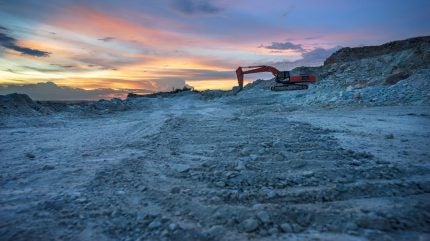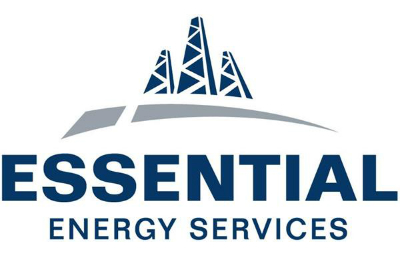
Tesla will stop making the current version of the Model 3 sedan at its factory in Shanghai, China, on August 14 as it prepares to begin manufacturing the refreshed Highland version of the car, according to several media sources. On social media, Chris Zheng posted, “Giga Shanghai started production switchover, starting this week to produce two days of current Model 3, two days of Highland production, alternate operation, and completely switch to Highland production two weeks later.”
Chinese industry news source AutoHome wrote on August 3, “At this year’s Q2 financial report meeting, Musk said the factory would be shut down and upgraded in the third quarter. In this regard, Musk also warned that the data in the third quarter would be abnormal due to the shutdown of the factory. It is reported that this upgrade is to switch the production line to the production of the new Model 3.”
“In addition, the recent delay in the delivery date of the Tesla Model 3 in Europe is also seen as a prelude to the facelift of the Model 3. It is reported that the current delivery time for the rear drive and long range versions in the European market is from October to November 2023, and the expected delivery time for the Performance version is from November to January 2024.”
While the Tesla Model 3 is a very good car, it has been in production in China since October of 2019 and was first introduced in the US in July of 2017. That means the basic design in now 6 years old. Tesla is facing intense competition from other electric car manufacturers in China, who seem to introduce new models almost on a monthly basis.
As we reported last November, Tesla has been working behind the scenes to improve the Model 3 by simplifying the production process. The changes will reduce the cost of manufacturing, which could lead to lower prices for consumers and/or higher profit margins for the company.
“The Model 3 refresh program is known internally as the Highland Project, and the sources say it is focused on reducing the number of components and complexity in the interior of the Model 3 while enhancing the features that Tesla buyers value, particularly the center touchscreen. While the Model 3 had the long range, semi-affordable electric sedan space all to itself when it was introduced five years ago, it now faces significant competition, especially in China where companies like BYD, Nio, and XPeng are rapidly bringing competitive electric sedans of their own to market.”
Another social media source, teslashanghai, posted this: “Trial production has already begun, and mass deliveries will start in September, ahead of the initial expectations. The project is highly confidential, and as soon as a trial vehicle is produced, it will be concealed.”
Tesla Model 3 sedans for Europe and other markets outside North America are produced at the factory in Shanghai, which is rumored to be running at its full capacity of 750,000 cars per year. Tesla is also rumored to have briefly suspended production at its Fremont plant in California to switch production there to the new Model 3 for the US market.
What’s New In The Tesla Model 3 Highland?
Tesla, as usual, is keeping news about the Highland update under wraps, leaving us to speculate based on tidbits gleaned from sources who may or may not know what they are talking about. Prototype images suggest that the main changes to the appearance will be to the front and rear. “The new car has a more impressive design, with tail lights similar to Porsche Macan, and an overall feel similar to Model S,” claims teslashanghai. In a vehicle filmed at Tesla’s Fremont site, the driver’s movements apparently suggested that Tesla is doing away with steering column levers for turn signals, headlights, and windscreen wipers, as it did in the Model S, according to Electrive.
There are also rumors that Tesla will equip the new edition of its Model 3 produced in China with lithium-manganese-iron-phosphate battery cells supplied by CATL. This should increase the range of the base model from the current 491 kilometers (WLTP) to 556 kilometers. However, the charging performance of LMFP cells is generally somewhat poorer. It remains to be seen what solution Tesla has found — if the switch to LMFP cells is made at all. Other rumors are about upgrades to the drive and performance, but there has been no confirmation of these yet either.
Last November, Reuters reported that a focus of the redesign for the Model 3 would be on further reducing the number of components and complexity in the interior. teslashanghai also suggests the revised car will be less expensive to build. “The most exciting part is that the price of the new vehicle should be around RMB 200,000 based on the cost of the components of the new project.” Production costs are kept confidential, but 200,000 yuan is currently equivalent to just over 25,400 euros. How lower production costs will affect the selling price of the Highland version of the Model 3 remains to be seen.
Tesla Defends False Range Claims
Reuters reports this week that three Tesla owners in California have sued Tesla, claiming that it lied about the range owners could expect from their cars. The three plaintiffs are seeking class action status to represent all Tesla owners in California. The lawsuit, filed in the US District Court for the Northern District of California, cites a Reuters article published last week which reported Tesla had created a “Diversion Team” in Nevada to cancel as many range-related service appointments as possible after being inundated with owner complaints.
That report said that a decade ago Tesla decided to write algorithms for its in-dash range meter that would show drivers “rosy” projections for the distance the car could travel on a full battery, according to a source. Allegedly, the directive to create the optimistic range estimates came directly from Tesla CEO Elon Musk. Reuters says it could not determine whether Tesla still uses algorithms that boost range estimates.
The lawsuit alleges Tesla breached vehicle warranties and engaged in fraud and unfair competition. “Put simply, Tesla has a duty to deliver a product that performs as advertised,” Adam A. Edwards, an attorney at the firm representing Tesla owners in the lawsuit, said. The complaint says, “Had Tesla honestly advertised its electric vehicle ranges, consumers either would not have purchased Tesla model vehicles, or else would have paid substantially less for them.”
The Takeaway
The first problem for these plaintiffs is that the EPA publishes range estimates based on some very careful calculations. If the plaintiffs are suggesting Tesla somehow bamboozled the EPA, that is a very different kettle of fish. Readers should also keep an open mind about class action suits. As any fan of John Grisham novels is aware, class action suits are sometimes more about generating large legal fees than addressing legal harms.
Would Elon Musk actually order his minions to fudge the numbers on the range estimator in Tesla automobiles? That will be for a jury to decide, if things actually get that far. From our own experience (70% of CleanTechnica writers own electric cars), range estimates are seldom accurate. That’s why most EV owners call them “guess-o-meters.” Those who expect them to be accurate at all times are bound to be sadly disappointed.
I don’t like paywalls. You don’t like paywalls. Who likes paywalls? Here at CleanTechnica, we implemented a limited paywall for a while, but it always felt wrong — and it was always tough to decide what we should put behind there. In theory, your most exclusive and best content goes behind a paywall. But then fewer people read it! We just don’t like paywalls, and so we’ve decided to ditch ours. Unfortunately, the media business is still a tough, cut-throat business with tiny margins. It’s a never-ending Olympic challenge to stay above water or even perhaps — gasp — grow. So …




